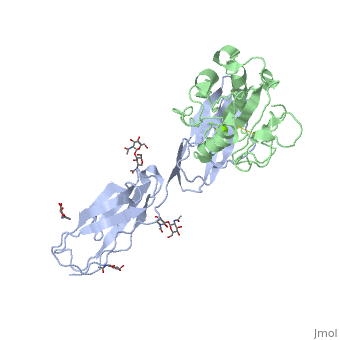Intercellular adhesion molecule
FunctionIntercellular adhesion molecule (ICAM) is part of the immunoglobulin superfamily. ICAM binds to leukocyte function associated molecule 1 (LFA-1) and macrophage-1 antigen during inflammation[1]. ICAM contains 5 Ig-like domains.
DiseaseICAM mutation is involved in multiple sclerosis[2].
|
| ||||||||||
3D structures of intercellular adhesion molecule3D structures of intercellular adhesion molecule
Updated on 04-July-2024
ReferencesReferences
- ↑ van de Stolpe A, van der Saag PT. Intercellular adhesion molecule-1. J Mol Med (Berl). 1996 Jan;74(1):13-33. PMID:8834767
- ↑ Nejentsev S, Laaksonen M, Tienari PJ, Fernandez O, Cordell H, Ruutiainen J, Wikstrom J, Pastinen T, Kuokkanen S, Hillert J, Ilonen J. Intercellular adhesion molecule-1 K469E polymorphism: study of association with multiple sclerosis. Hum Immunol. 2003 Mar;64(3):345-9. PMID:12590979
